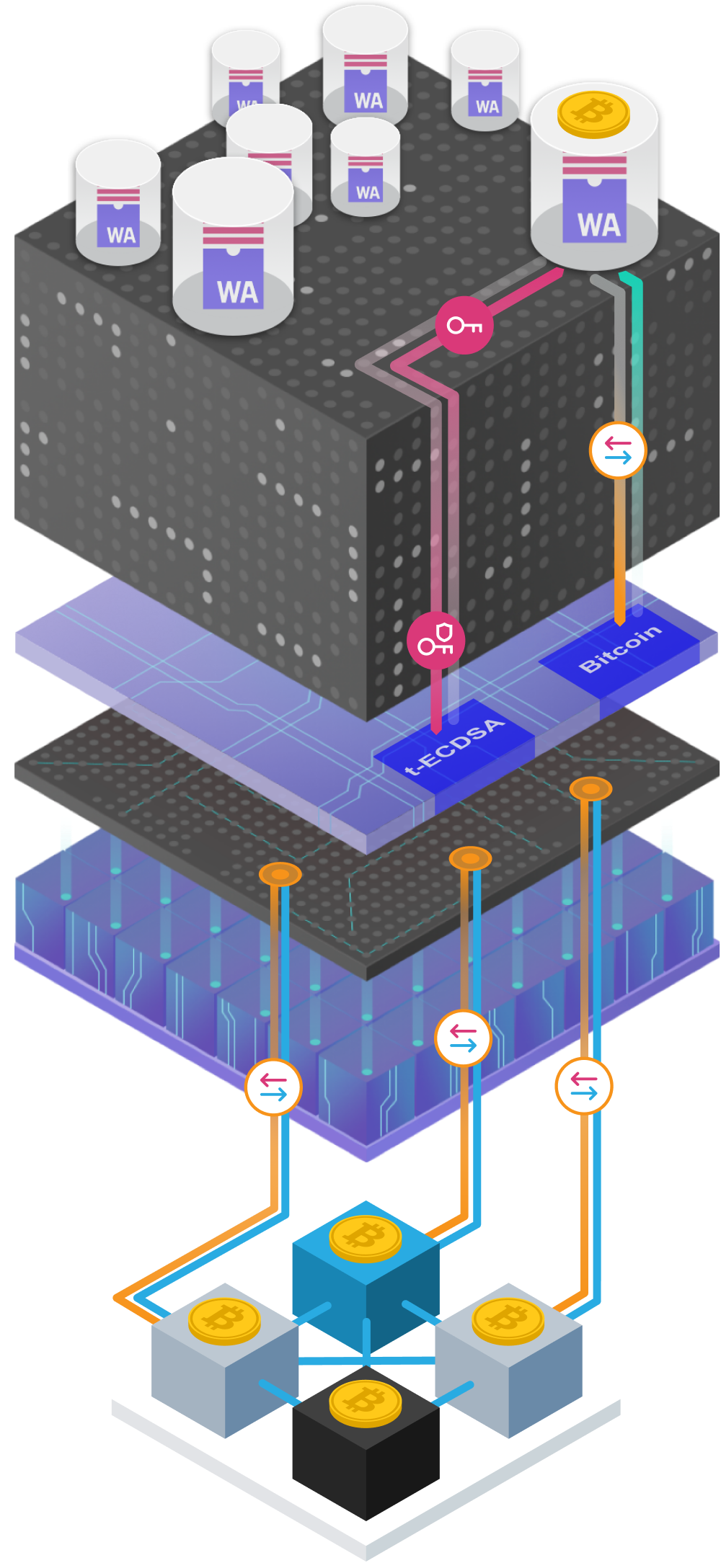Code Bitcoin
The Internet Computer is cryptographically integrated with the Bitcoin network. The canister smart contracts it hosts can create bitcoin addresses, and send and receive bitcoin, directly on the Bitcoin ledger. This means "wrapped bitcoin" from insecure centralized "bridge" services, which have been hacked for billions of dollars, are no longer needed in DeFi and Web3. Say hello to 1-chain-is-many-chains!

How It Works
Two key technology developments make it possible for Internet Computer smart contracts to create bitcoin addresses and directly send and receive bitcoin: inter-node communication between the Internet Computer network and the Bitcoin network, and the use of novel threshold ECDSA cryptography by its protocols.
Network Integration
When the Internet Computer blockchain creates transactions for the Bitcoin blockchain, its nodes directly transmit the transaction to the Bitcoin network's nodes, without any need for intermediaries that might censor them. Internet Computer nodes also directly pulls blocks from the Bitcoin network to maintain Bitcoin's current UTXO set.
Threshold ECDSA
Novel "threshold cryptography" enables the Internet Computer to distribute, and redistribute, secret key material among its nodes, and have them cooperate to create new bitcoin addresses and sign Bitcoin transactions, using highly fault tolerant decentralized network protocols that are resilient to attacks by malicious nodes.
With the Bitcoin API and ECDSA API, canisters can directly securely receive, hold, and send bitcoins, as though they were smart contracts actually hosted on the Bitcoin network itself.
This means bitcoin can be easily and securely incorporated into DeFi and Web3 services on the Internet Computer, without the need to trust bridging services that might get hacked, or taken down, causing the loss of the bitcoin involved.
For example, DEXs (decentralized exchanges) can easily provide BTC trading pairs, decentralized fundraises can accept bitcoin, and a Web3 SocialFi service might allow satoshis to be sent using chat messages.
Lightning Network-like services can also be created by wrapping bitcoin inside fully autonomous Internet Computer smart contracts, such that bitcoin can be sent between users, Web3 services and DeFi contracts, in only 1-2 seconds.
Release Timeline



Beta Release
Bitcoin integration
Threshold ECDSA
Example code & doc
On-chain-tradable asset
Purpose
Status

GA Release
Bitcoin integration
Threshold ECDSA
Example code & doc
On-chain-tradable asset
Purpose
Status
Bitcoin Videos
From concept to coding - learn all about the Bitcoin Integration feature on the Internet Computer through these videos.
Explore more videosCode Bitcoin
Directly process bitcoin on the Bitcoin ledger using ICP smart contracts. Add bitcoin to your ICP web3 services or create native Bitcoin DeFi.


